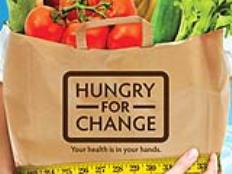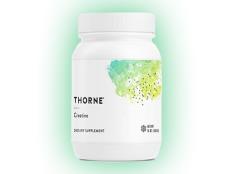
What Are Vitamins | Nutrient-Dense Foods | Fat-Soluble Vs. Water-Soluble Vitamins | Best Vitamin D Supplements | Best Magnesium Supplements | Best Iron Supplements | Best Vitamins for Energy | Best Beet Supplements | Best Vitamin B12 Supplements | Best Calcium Supplements
Taking a multivitamin is the easiest and quickest way to get your daily dose of micronutrients. Vitamin and mineral supplements help fill nutrient gaps in your diet. But what if you prefer to get all or at least most of your nutrients from whole foods? This story gives you the ultimate list of vitamin-packed foods to add to your grocery list.
How to Get More Vitamins and Minerals from Your Diet
Popping a supplement makes it easy to meet your vitamin and mineral needs. However, vitamin and mineral supplements can't make up for eating a nutrient-poor diet. Food contains other components that contribute to good health including fiber and phytonutrients, plant-based compounds that help protect the body from harm. Also, some foods contain a package of nutrients that have a synergistic effect (they work together) or have greater bioavailability compared to getting the vitamin or mineral in a supplement.
The easiest way to meet your vitamin and mineral needs is by choosing nutrient-dense foods. Nutrient density refers to the total amount of vitamins, minerals, fiber, lean protein, and complex carbohydrates per the amount of calories in a food. Foods that are nutrient-dense contain more nutrients and fewer calories, and they are prepared with the lowest amounts of sodium, saturated fat, and added sugars. Choosing nutrient-dense foods makes it easier to meet your nutrition needs, including vitamins and minerals, while staying within your total calorie allotment for the day. Fruits and vegetables, whole grains, low-fat or fat-free milk and yogurt, seafood, poultry, lean meats, eggs, legumes (which includes beans and peas), and seeds and nuts are all examples of nutrient-rich foods.
The Dietary Guidelines for Americans outline food patterns that help ensure you will meet your nutrient needs. In particular, the Guidelines divide foods into five groups and subgroups based on nutrients. They further break down the recommended number of servings of foods from each of the food groups based on age, life stage (e.g., females of childbearing age, etc.), and sex.
If you meet the recommended number of servings from each of the food groups and subgroups, you are more likely to meet your nutrient needs.
- Fruits
- Vegetables: dark green, red/orange, beans and peas, starchy, and other
- Dairy: including calcium-fortified soy beverages
- Grains: whole grains and refined grains
- Proteins: meats, poultry, and eggs; seafood; nuts, seeds, and soy products
Although the dietary guidelines specify that potassium, calcium, and vitamin D are the only three nutrients of public health concern, there are other nutrients that certain subgroups are likely to also fall short on. These include choline, folic acid, and iron. Magnesium may also be of concern, as many individuals do not eat enough magnesium-rich foods.
Best Sources of Vitamins in Foods
It is difficult to meet your vitamin D needs through food alone because this vitamin isn't in many foods. The top foods that contain vitamin D include swordfish, sockeye salmon, tuna, orange juice fortified with vitamin D (check the label), yogurt fortified with vitamin D, and fortified milk. Although the body can make vitamin D upon the skin's exposure to sunlight, many people do not have adequate levels of vitamin D in their blood. Therefore, supplementation is the best route.
Choline is necessary for the function of all cells, metabolism, brain development and functioning, and creatine formation. National survey data suggest many people are falling short of their choline needs. Among other issues, choline deficiency can lead to a decline in muscle functioning. Eggs, organ meat, soybeans, beef, chicken, and turkey are your best bets for meeting your choline needs.
Folic acid/folate is a B vitamin that is especially important for preventing birth defects. Therefore, women of childbearing age have an increased need for folic acid/folate. Folate is found in food while folic acid is the term used for the man-made form of folate found in dietary supplements and fortified foods. Folate is necessary for normal metabolism and healthy red blood cells. Deficiency can lead to megaloblastic or macrocytic anemia. Anemia is when blood fails to carry enough oxygen throughout the body. Excellent sources (those containing less than 20 percent of the daily value per serving) of folate include beef liver, cooked spinach, black-eyed peas, cooked rice, asparagus, and enriched spaghetti. Good sources (those containing less than 10 percent of the daily value per serving) include cooked broccoli, raw spinach, avocado, white bread, kidney beans, green peas, and boiled mustard greens.
Best Sources of Minerals in Foods
Potassium, calcium, iron, and magnesium are all nutrients of concern or may be of concern to some people. The best way to get potassium is through fruits and vegetables, but there are also potassium supplements available. Calcium is best found in dairy products. The top way to get iron is through fortified cereal, red meat, beans, and lentils, and nuts and seeds are your best bet for magnesium.
Potassium is essential for fluid balance, cell structure and function, and muscle and nerve functioning. Also, getting enough potassium through food is especially important for those who have high blood pressure, as a higher potassium diet is associated with lower blood pressure. You won't find much potassium in dietary supplements (typically up to 2 percent), as getting too much potassium chloride in supplements can be dangerous. Therefore, it's best to eat a diet full of fruits and vegetables, particularly yams, lentils, squash, and beans, to meet your potassium needs. One easy way to do this is to include at least one fruit or vegetable at every meal and snack.
Calcium is known for its role in keeping teeth and bones strong. However, this mineral is also essential for muscle, nerve, and blood vessel functioning. If you consistently don't consume enough calcium, your body will take it out of your backup storage site in your bones. Over time this can lead to weak and brittle bones. The dietary guidelines only list milk and calcium-fortified soy milk as nutrient-rich beverages. This is because other milk alternatives do not contain the same nutrient-rich package as milk does. However, calcium-fortified soy milk is both a good source of protein and calcium.
Iron is known for its role in energy production and oxygen transport through the body. However, it is also important for growth, development, cell functioning, immune functioning, and the functioning of some hormones. Fortified cereals and oysters contain the most iron per serving. Good sources of iron include sardines, kidney beans, ground beef, tofu, spinach, lentils, and chickpeas. Animal sources of iron are better absorbed compared to plant sources of iron, however, you can increase your body's absorption of iron from plant foods such as beans by combining them with a source of vitamin C. For instance, you can have chili that contains both beans and tomatoes or eat an iron-fortified cereal with 100 percent orange juice.
Magnesium is found in a lot of foods but in very small amounts. This mineral is necessary for over 300 reactions in the body! Therefore, it should come as no surprise that magnesium has an impact on a wide array of functions, including protein synthesis, nerve and muscle function, glucose control, and blood pressure regulation. This mineral is also important for metabolism and energy production and it is a structural component of bone. Add beans, nuts, and seeds to your diet to get more magnesium. In particular, sesame seeds, pumpkin seeds, and sunflower seeds contain the most magnesium per serving. Good sources of magnesium include ground beef, cashew nuts, chicken, cheese, plain yogurt, milk, salmon, white beans, Brazil nuts, and Swiss cheese.
Meeting your vitamin and mineral needs is harder when you consume a lower-calorie diet, as you will have fewer opportunities to get in enough nutrients. Luckily, there are many foods packed with nutrients to help prevent nutrient deficiencies. Following the Dietary Guidelines by getting adequate servings of foods from each food group and subgroup will help ensure you are more likely to meet your vitamin and mineral needs.
To make it easy, consider putting milk, legumes (beans, peas, lentils), nuts, seeds, lean beef, fruits, and vegetables at the top of your grocery list!
What Are Vitamins | Nutrient-Dense Foods | Fat-Soluble Vs. Water-Soluble Vitamins | Best Vitamin D Supplements | Best Magnesium Supplements | Best Iron Supplements | Best Vitamins for Energy | Best Beet Supplements | Best Vitamin B12 Supplements | Best Calcium Supplements







Discuss This Article